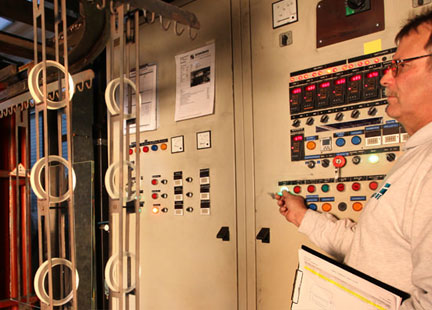TEMPERING/TOUGHENING
Tempering
During tempering, glass from a thickness of 3 mm is heated in an oven to roughly 600 °C before being rapidly quenched to room temperature by blasting with cool air. Since the material cools at different rates from the outside inwards, the centre remains under tension while the outer surfaces go into compression.
As a result of this thermal treatment, the material becomes resistant to thermal shock, compression and impact, and disintegrates into small chunks when smashed (safety glass).

Chemical toughening
A similar distribution of tension and compression can be achieved, particularly in thin glass, with an exchange of ions in the glass surface. To this end, glass cooled in the normal way is immersed in a high-temperature (roughly 420 °C) salt solution or molten salt for several hours. The desired ion exchange takes place in the glass surface. This effect can be enhanced by applying a voltage. Large salt ions replace small glass ions to generate compression in the surface. The tension curve is steeper than that of tempered safety glass. It is also interesting to note that higher flexural strength can often be achieved in the glass thickness range up to 5 mm. However, when smashed, the glass does not disintegrate into small chunks.
Die besten Ergebnisse werden bei Natronkalkglas, bzw. Aluminiumsilikatglas erzielt.
